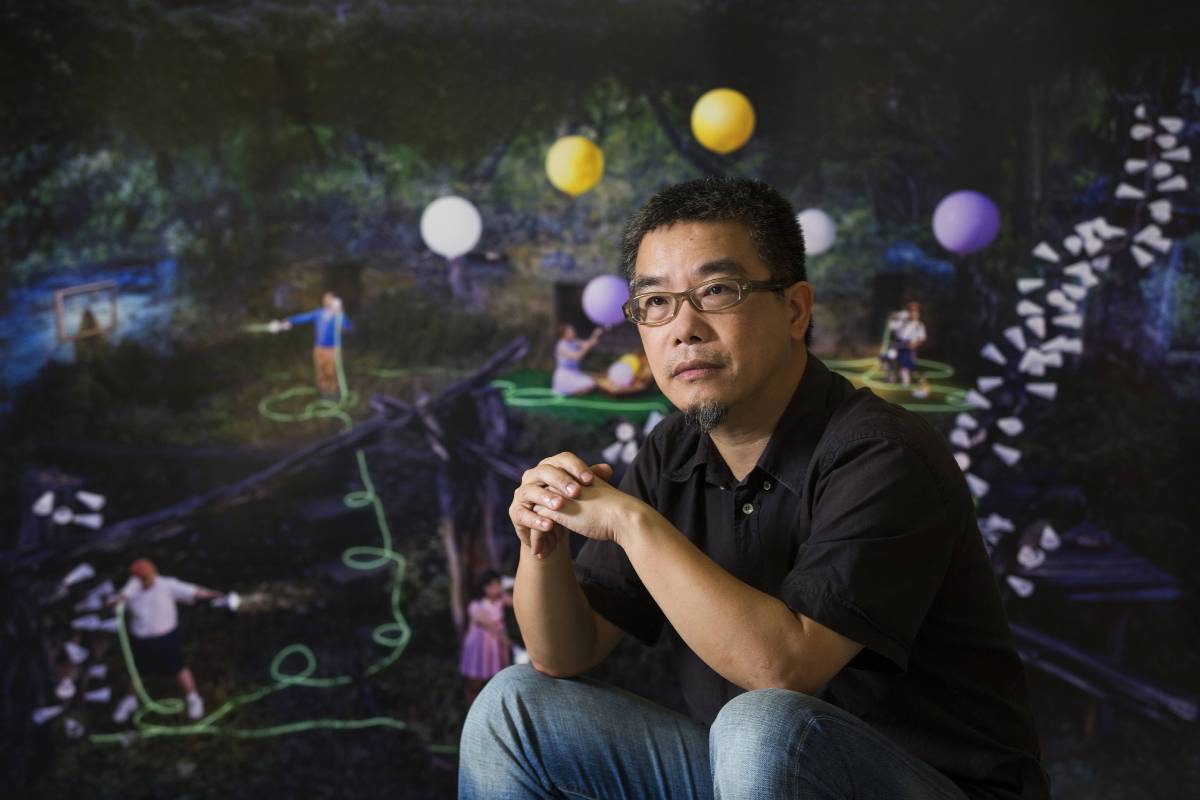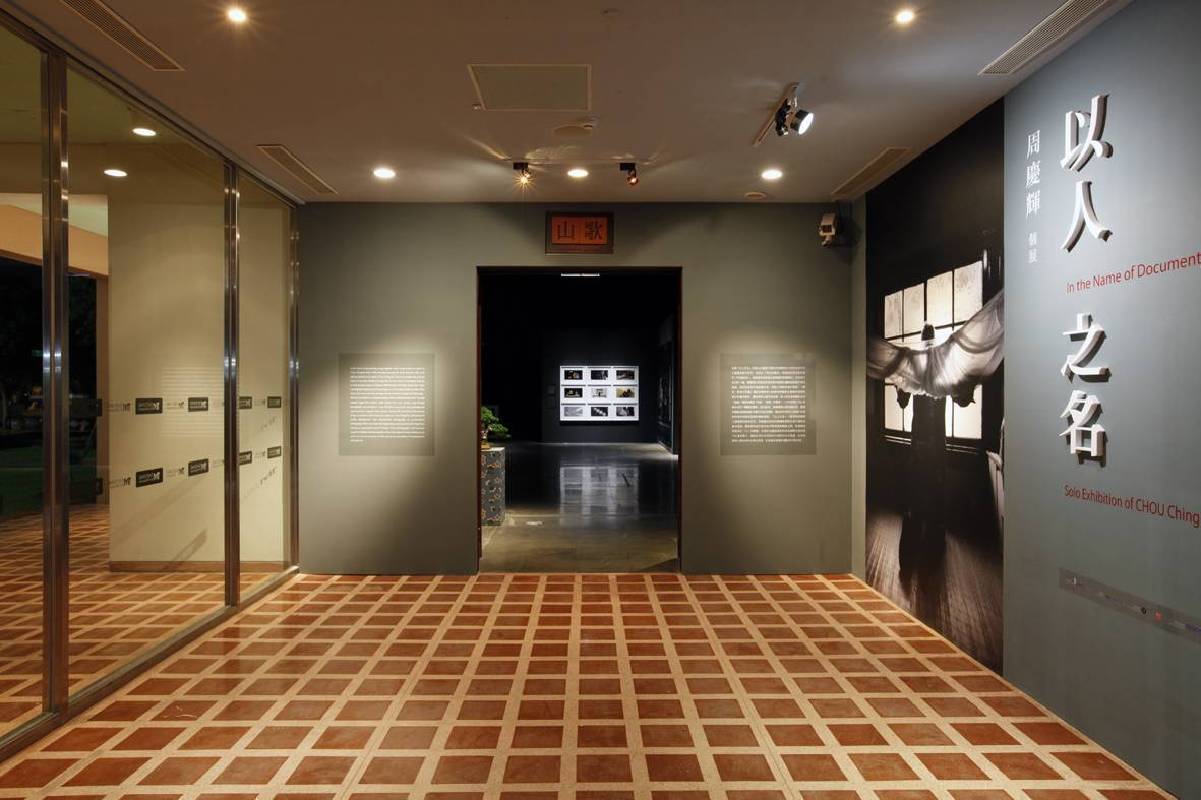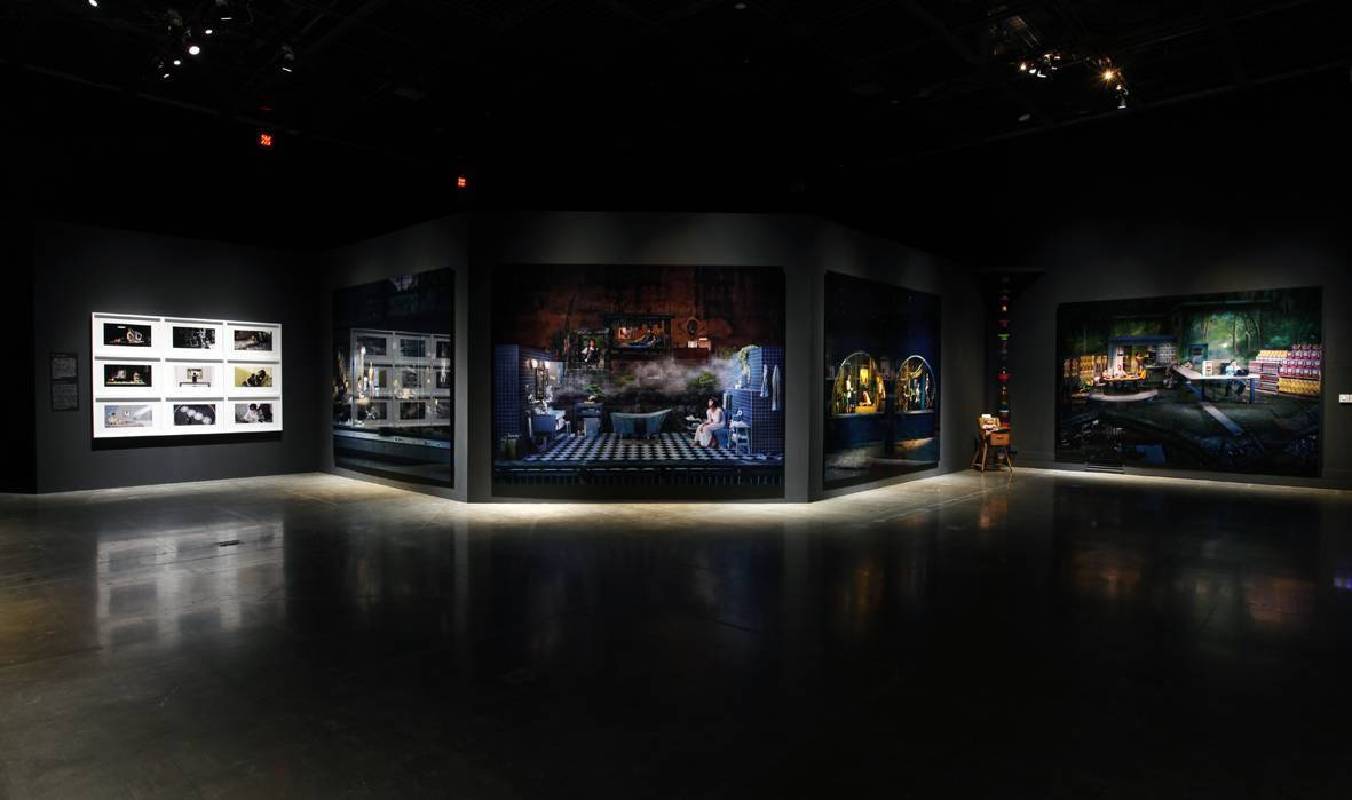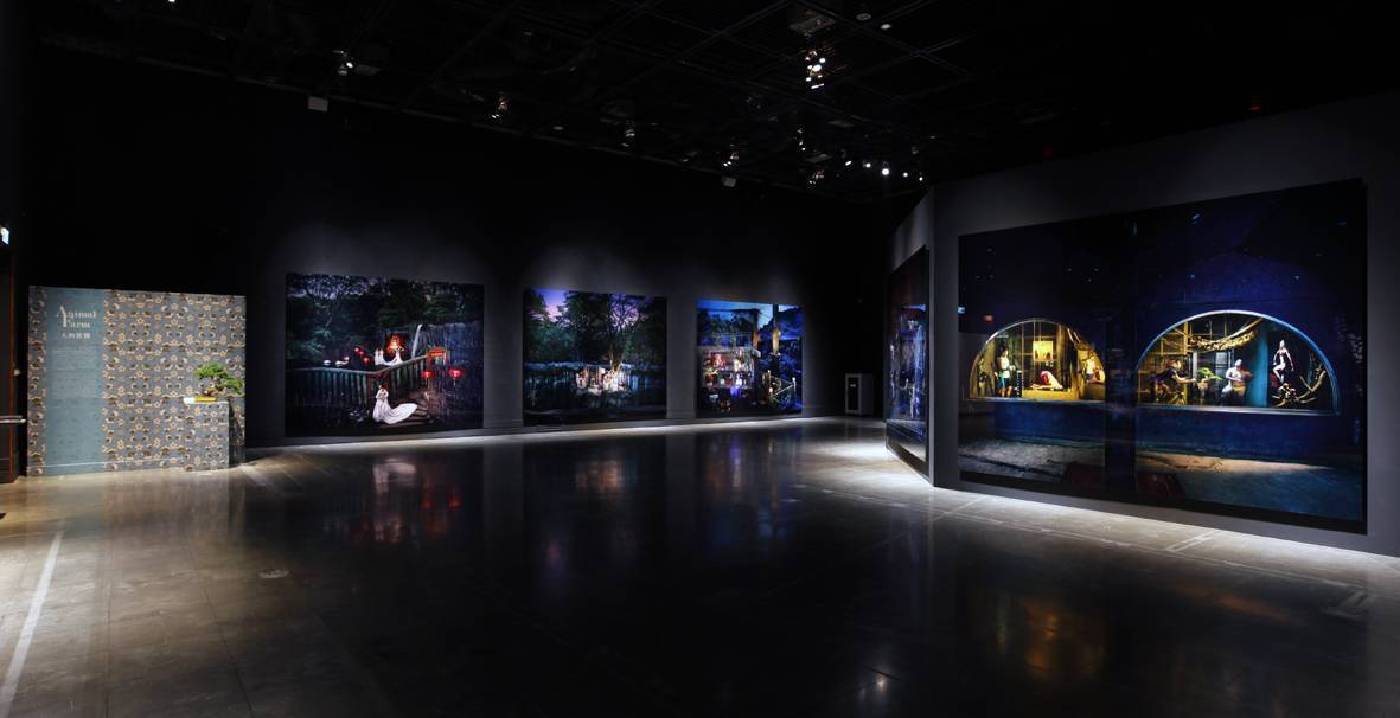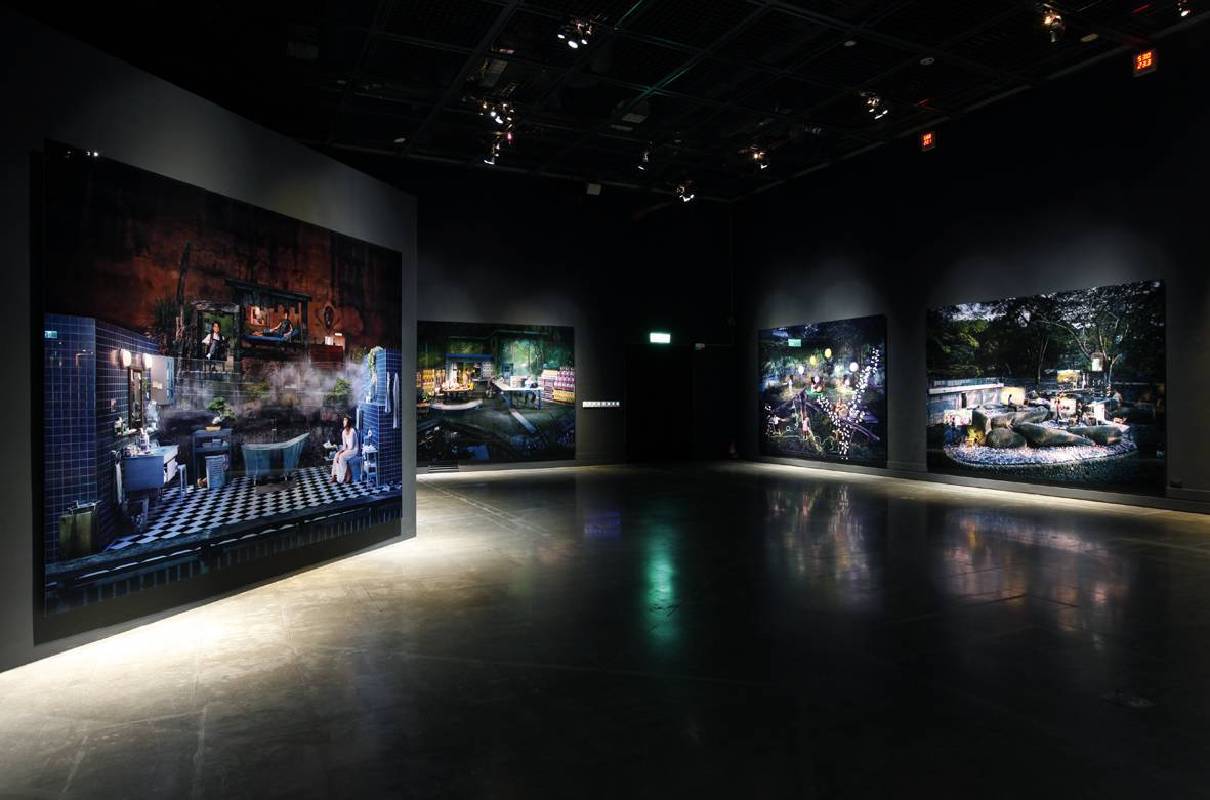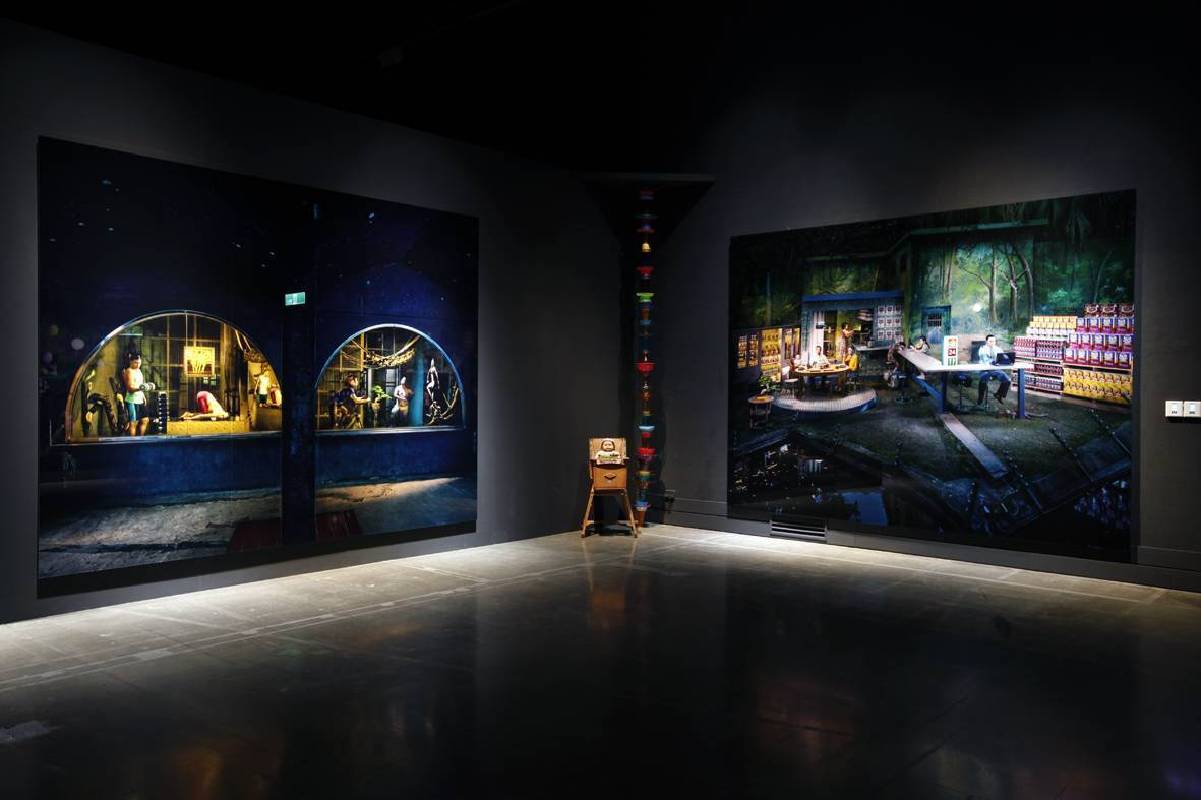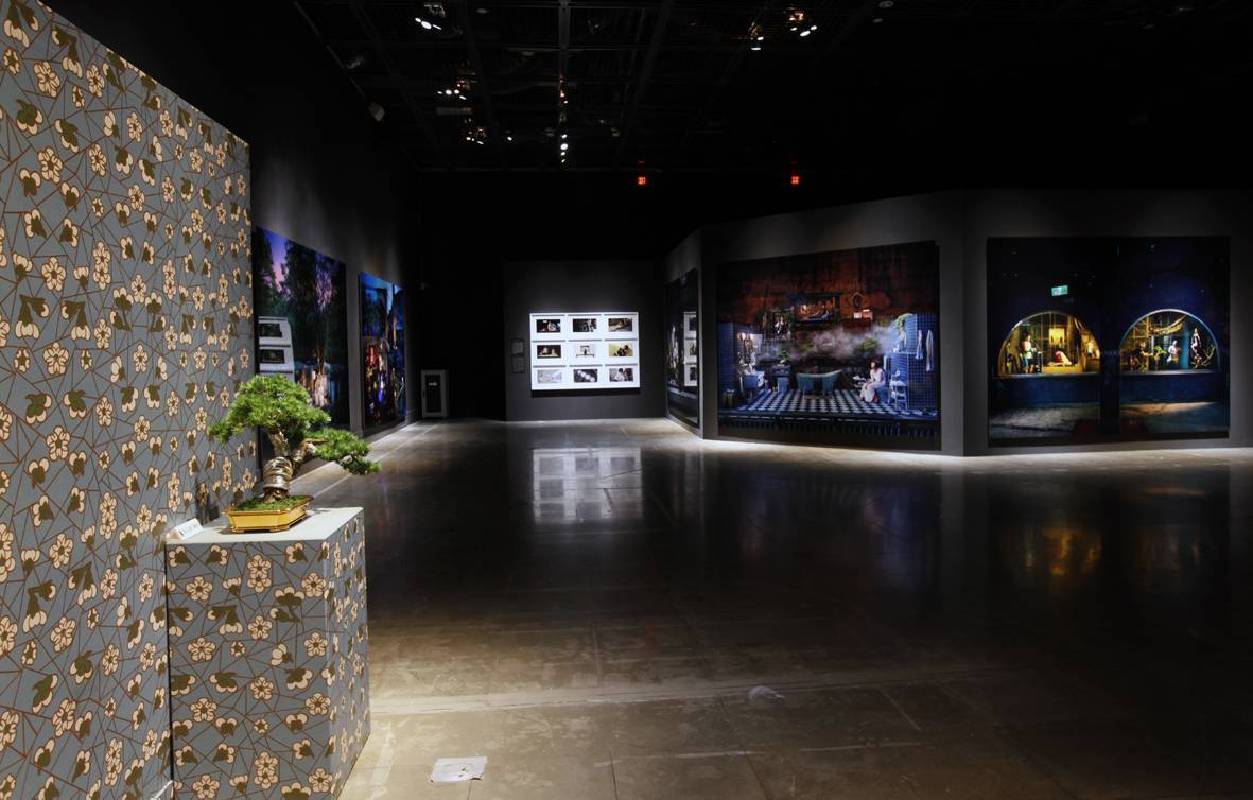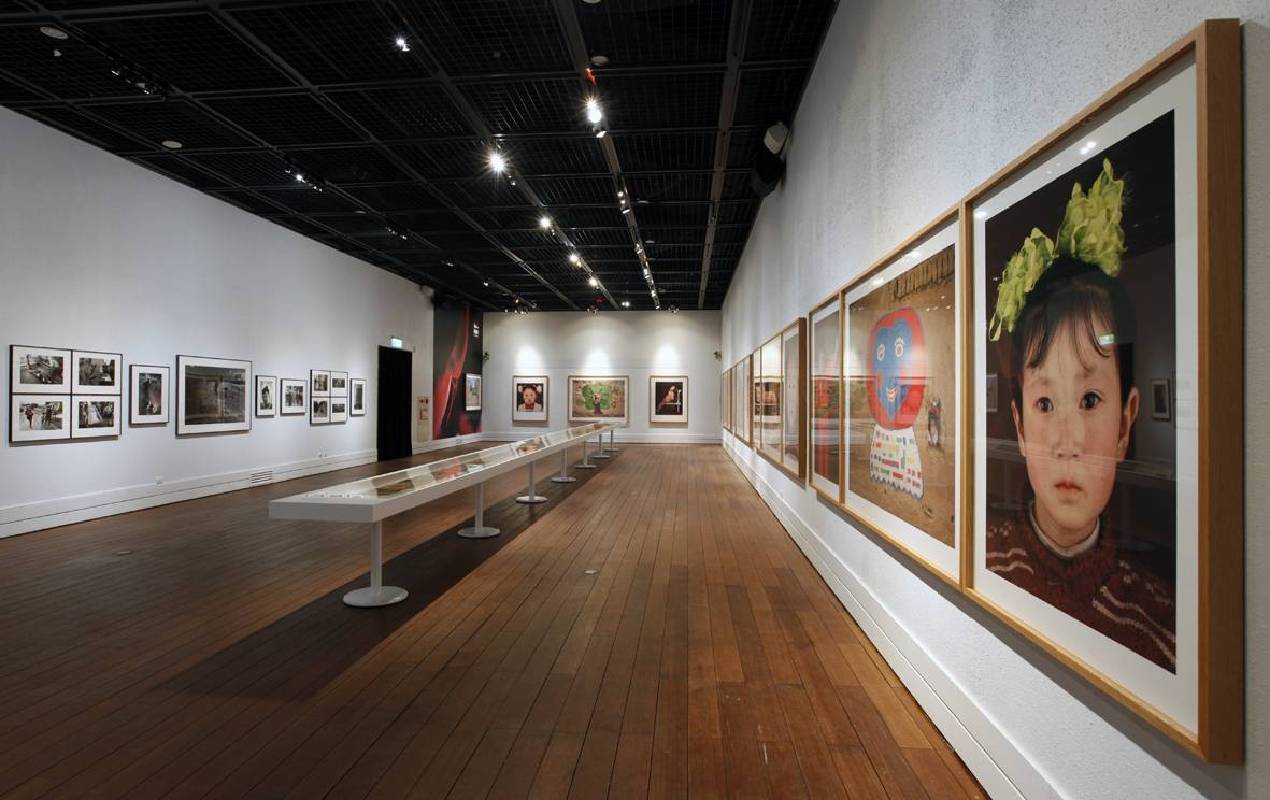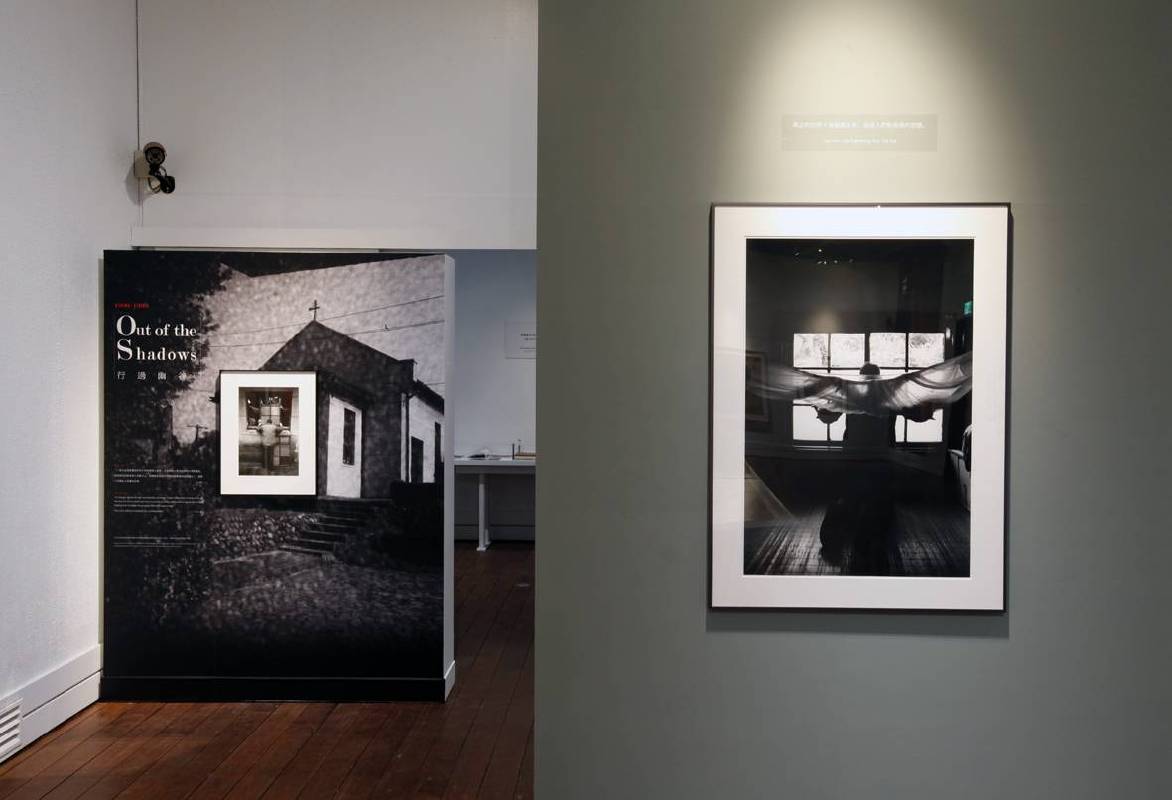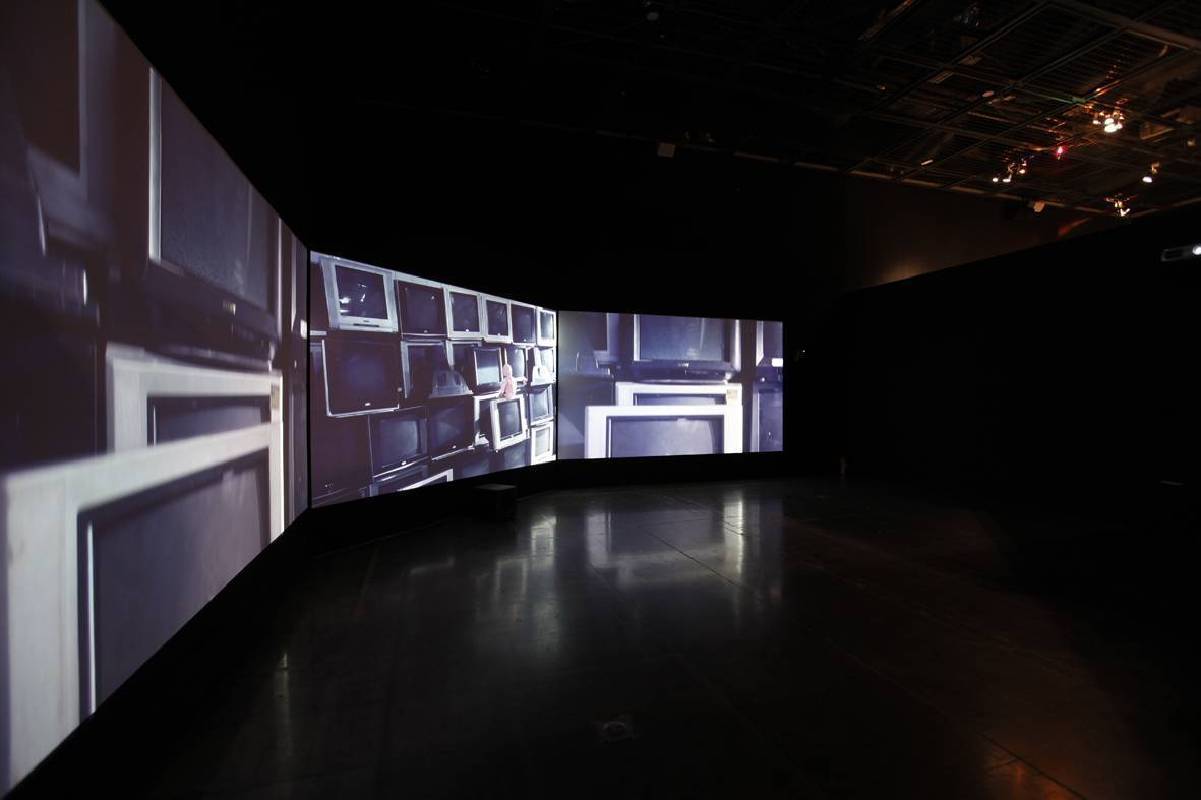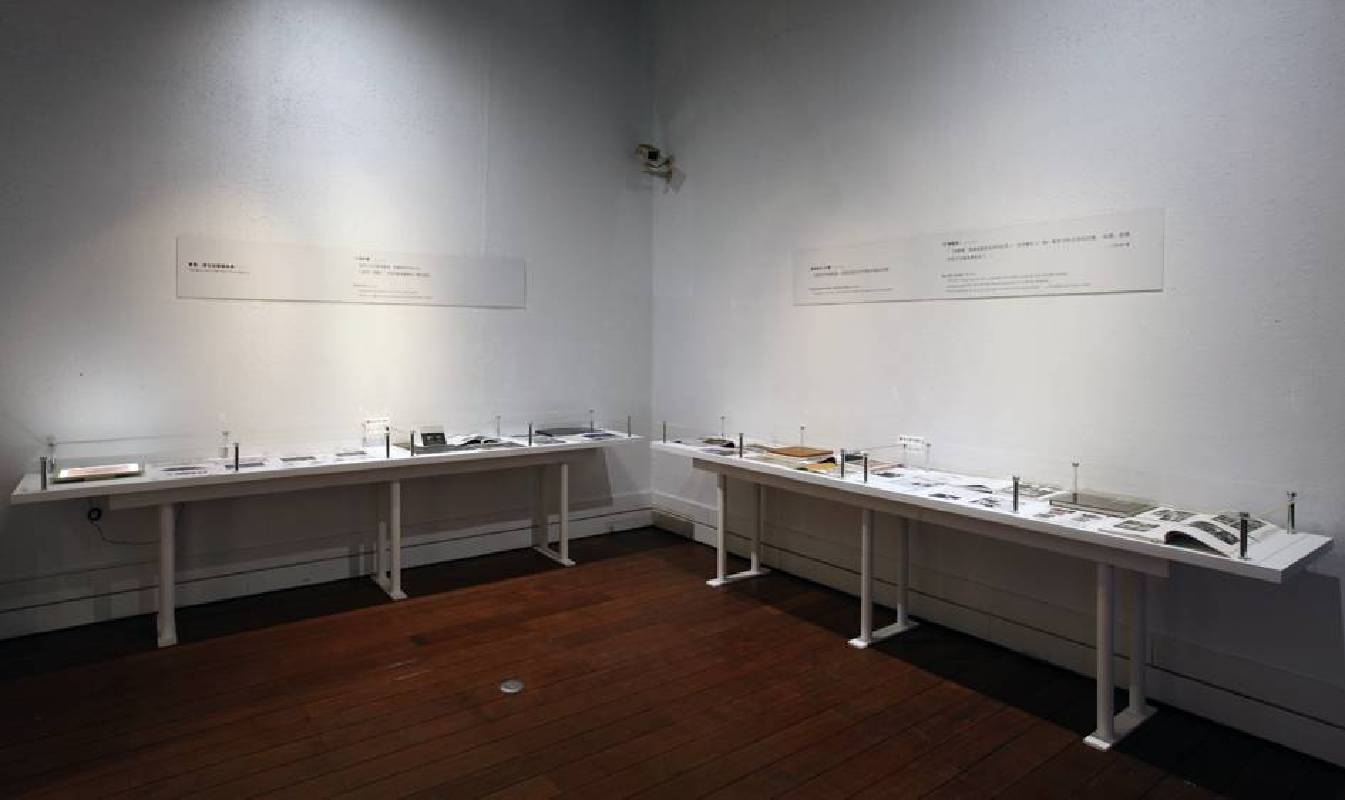采泥藝術
【「以人之名─周慶輝個展」】

-
展期
日期:2017-03-25 ~ 2017-05-14
-
地點
台東美術館
-
參展藝術家
周慶輝
-
[ 展覽訊息 ]
以人之名—周慶輝個展
展覽日期:2017.03.25 - 2017.05.14
開幕活動:2017.03.25 14:00
展覽地點:台東美術館
│Exhibition│
In the Name of Documenting: Selected works of CHOU Ching-Hui
Exhibition Period 2017.03.25 - 2017.05.14
Opening 2017.03.25 14:00
Venue Taitung Art Museum
本展「以人之名」將展出台灣當代攝影家周慶輝自1990年始進行的三個攝影創作系列,包括以「樂生療養院」痲瘋病患為記錄對象的《行過幽谷》。痲瘋病患背負著社會群體的異樣眼光,成為被污名化的一群。周慶輝以紀實且帶有詩意的鏡頭刻畫痲瘋病患的常民姿態,真正的恐怖不是痲瘋本身,而是人們對疾病的想像;《野想:黃羊川計畫》源起甘肅黃羊川地區的孩童對於電腦的想像所進行的繪本製作,藝術家再以繪本為依據,將人與社會景觀結合成「造相」場域來傳遞「科技 · 野想」的概念;《人的莊園》則以自創文本的「編導式攝影」進行創作,拍攝場景以動物園為主。園裡的圍籬象徵身陷於牢籠內的生活樣態,藉此影射現代人自縛於社會無形制約而無法逃脫的被動處境。「以人之名」一展呈現周慶輝三個重要的創作系列,梳理藝術家從紀實攝影轉換到當代攝影的創作脈絡。藝術家的創作技法在不斷突破與轉換之際,其鏡頭始終聚焦於「人」的關懷,在資本主義與資訊科技為運轉主軸的現代社會結構下,肇因於現代性發展所引發關乎生存意識、生命經驗等人類存有的本質性問題,則是藝術家關於攝影的不變初衷。
In the Name of Documenting brings together three creative series of works by Chou Ching-Hui from 1990 onwards, including Out of the Shadows, which took leprosy patients as its subject. Chou Ching-Hui’s factual yet poetic lens portrays lepers in everyday attitudes, showing that the true horror is not leprosy itself but in what people imagine of disease. Wild Aspirations: The Yellow Sheep River Project was originally based around the conceptions of computers held by children from Gansu. The artist used the paintings and the children’s concepts of ‘Technology - Ideal’ as a foundation to integrate people and the social landscape into a ‘mutually creative’ space. The creative series Animal Farm was created using ‘directed photography’, set primarily in a zoo. The fences around the zoo symbolizes the cage humanity is trapped within and yet unaware of. In the Name of Documenting brings to audience three important series by Chou Ching-Hui, delineating the artist's development from documentary photography to contemporary photography. While his artistic techniques keep evolving and transforming, Chou has always expressed his care for "human." Chou's photographic work has never ceased to highlight essential questions about the issues of human existence, such as the survival consciousness and life experience, prompted by the development of modernity.
***************************************************************
【三大系列】
《行過幽谷》Out of Shadow (1990-1993)
「(周慶輝)是縫補破碎生命的拾荒人,收拾樂生人一點一點失守的生命和記憶,拾著、拾著,把自己也縫進裡面去了。」— 作家 張大春
"[CHOU Ching-Hui] was like a scavenger who sewed up the life that had been broken, picking up piece by piece the lost life and memories of Lo-Sheng residents. As he continued to do so, he had sewn himself into the picture, too."
—CHANG Ta-Chuen, writer
「行過幽谷」為周慶輝第一個大型攝影創作計劃,以「樂生療養院」的痲瘋病患為對象,進行為期三年的駐點拍攝。儘管痲瘋病作為低傳染率的疾病,痲瘋病患自古即承載著世俗的異樣眼光,成為被污名化的弱勢族群。相對於人們對於該疾病的恐懼,周慶輝反以冷然客觀的視角,不刻意煽動或渲染情緒的紀實拍攝手法,切入痲瘋病患的生活層理,從起居、信仰、醫療等多層剖面建構痲瘋病患的生活樣態。周慶輝援用攝影的記錄性作為「樂生療養院」此曾在的証成,也記錄這些生命之流如何在抵達終點之際,澆溉出自成一格的生命圖樣,刻畫屬於他們的往昔。面對著不斷削減的身體版面,在滿佈殘缺與瀕臨死亡之前,任何悲苦喜樂都是日常,黑白攝影的詩意氤蘊烘托痲瘋病患那股單一且絕對的生之欲望,更顯其崇高與莊嚴。本系列作品曾以「停格的歲月:痲瘋村紀事」為名,於台北市立美術館展出,後更名為「行過幽谷」。此名呼應《聖經》詩篇第二十三篇的篇章內容:「我雖然行過死蔭的幽谷,也不怕遭害。」對應於相片中痲瘋病患於起居生活的自然談笑,書中曾言「真正的恐怖不是痲瘋本身,而是人們對疾病的想像。」亦為本系列作品發人深省的一道註解。
Out of Shadow was Chou Ching-Hui's first large-scale photographic project, which was a three-year project to station at Lo-Sheng Sanatorium and photograph the leprosy patients. Public has always looked at leprosy patients with a different eye, stigmatizing this group of disadvantaged people. However, Chou perceived it from a calm and objective point of view and adopted the approach of documentary photography to present the leprosy patients' life, documenting as well as constructing their life from various aspects, including their daily routine, religious practice, and the medical service they received. Because of the documentary quality of photography, his work became a text that validated the existence of Lo-Sheng Sanatorium, proving how the patients' life had grown into a unique existence before it eventually faded into history. Facing the reality of their diseased bodies, which were incomplete and foreshadowed the impending death, they had grown accustomed to the sorrow and joy in life. The poetic atmosphere in Chou's black-and-white images illuminated the patients' determination to survive, accentuating the nobleness and dignity of their existence. This series used to be called Frozen in Time: Images of a Leper Colony, and had been shown at Taipei Fine Arts Museum. It was later renamed Out of Shadow, which echoed a passage in "Psalm 23" in the Bible: "Even though I walk through the darkest valley, I will fear no evil." Comparing to the natural smiles and casual behaviors of the leprosy patients in the photographs, the following words stated in the book became an enlightening comment on this series: "the real fear did not result from leprosy but people's imagination of the disease."
《野想:黃羊川計劃》 Wild Aspirations: The Yellow Sheep River Project (2006-2008)
無論在什麼地方,每一種文明都有如荒野; 然而,無論在什麼時刻,我們都還能有純真的夢想。
Every civilization is situated in the wilderness no matter where it is.
However, we still preserve the innocent dreams no matter when.
「野想:黃羊川計劃」乃以中國甘肅省「黃羊川」地區為創作基地,透過當地農村兒童對於電腦的想像為計劃藍本來探究「科技與夢想」這個議題。在台灣,「黃羊川地區」因「溫世仁基金會」的科技援助計劃而廣為人知。周慶輝的「野想:黃羊川計劃」進一步以紀實攝影作為切入當代藝術的載體來呈現人與夢想之間的關係。周慶輝透過搜集大量當地孩童關於電腦想像的繪本,再將其轉化、融合、拼湊成黃羊川小朋友的野想世界,一如在「孩童肖像」中,孩童們不帶表情的臉孔,其瞳孔內閃爍著彩色的夢想光芒。然而,當孩童關乎電腦的想像轉置於頹圮的土牆上,一幅幅屬於科技的未來奇想襯於沒落衰敗的土牆殘骸,則以衝突、反差的對比手法體現理想與現實的不可調和。「野想:黃羊川計劃」也為周慶輝由報導攝影轉向主觀創作的過渡階段。原來植於孩童腦海看不見的想像,透過藝術家的介入,並與社會景觀及地域結合成藝術家自我營造的「造像」場域。作品裡採用的「人像擺拍」隱約透露「編導式」風格的轉向,也作為藝術家下一個攝影計劃的創作方向指陳。
Wild Aspirations: The Yellow Sheep River Project was inspired by the region of Yellow Sheep River in Gansu Province, China, and explored the theme of "technology and dream" through examining how the village children would imagine computers. In Taiwan, Yellow Sheep River was known to the public because of the technological support program initiated by Sayling Wen Cultural and Educational Foundation. This project took a step further to visualize the relationship between people and dream through documentary photography in a contemporary art project. Chou first collected the local children's drawings about how they imagined computers. Then, he transformed, integrated, and pieced together the drawings into the children's world of wild aspirations. In "The Portraits of Children," the children's faces were devoid of any expression, but their eyes glistened with the light of colorful dreams. However, when their imaginations of computer were transferred onto the dilapidated earthen walls, all the visions about the technology on the shabby ruins of earthen walls revealed an unbridgeable gap between ideal and reality. This project also marked the transition in Chou's career as he moved from documentary photography to subjective creation. Through the power of the artist, the children's previously invisible imagination was combined with the social and geological landscape, enabling the artist to create a site for the "fabrication of image." The approach of "staged photography" used in this series signaled at his turn towards the style of "directed photography," pointing out the creative direction for the artist's next photographic project.
《人的莊園》 Animal Farm (2010-2014)
我們也住在動物園裡,過著被制約的生活。
社會是一個籠子,而我們都笑著看他人關在裡面。
We are all imprisoned in a zoo, living a restricted life.
Society is a cage, and we are staring with a smile at other encaged.
「人的莊園」源自一個長達五年、投入眾多人力與資源的拍攝計畫,也為周慶輝首度嘗試「編導式攝影」的影像創作計劃。藝術家以「動物園」為創作發想和拍攝場域,透過電影佈景的製作規格搭配動物園的真實牢籠,在動物園置入了夢幻化的表演舞台劇場和真實感的家居生活空間,在清晨與黃昏時刻造境演出,以荒謬、錯置的手法,讓活生生的人類搭配標本化的動物,在一種既是家園也似牢籠、從文明內室延伸到野外自然的詭譎情境中,共同演出一齣齣看來視覺華麗卻又啞然無語的默劇,雙向鋪陳了現代文明生活的浮華與困境。「人的莊園」開創一種宏大劇場、社會論述型的「編導式攝影」。影像中的每個角色主要以70年代流行服飾與造型風格打造而成的世俗人物,除了關係到藝術家對過去某個美好年代的特殊懷念,同時,也藉由呈現一個個自然人的面容姿態,一如一個個被抽空靈魂的物,對映出他們置身當代社會文化的無形框架中,因無法擺脫而日漸麻木的人文處境。
Animal Farm,is based on his five-year-long photography project that involved a large team and significant funding. In this project, Chou turns to zoos as his muses and sites of actual photo making, where vivid tableaus are created to suggest the sumptuous yet often baffled life of modern civilization. Theatrical sets were fabricated against the zoo environment, where the actors played their assigned roles as photos were taken at dawn and dusk. By so doing, Chou inserted surreal theatrical scenes and lifelike vernacular spaces into artificial enclosures in which wild animals were brought together and domesticated. Absurdity and displacement were emphasized as the artist situated humans among animals that were reminiscent of specimens. The home now looked like a cage, while the border between manmade interiors and the wilderness became blurred. While creating this so-called “directed photography” that is grand and theatrical in style and serves as a form of social discourse, Chou has also made close-up, sympathetic portraits for individual character on his sets. These secular characters were styled in fashionable clothing and looks from the 70s, revealing the artist’s particular, nostalgic feelings for a certain belle époque in the past. The representation of their clear visages and postures as ordinary people, on the other hand, contrasted the inescapable yet gradually numbing human condition in the contemporary social and cultural environment they lived in
***********************************
【藝術家】
The Artist
周慶輝
生於1965年,畢業於世界新聞專科學校,退伍後進入媒體工作,之後並開啟了幾個窮年耗月的專題攝影計畫,包括:「停格的歲月—痲瘋村紀事」(現稱為「行過幽谷」)、「消失的群像—勞動者紀事」、「野想—黃羊川計劃」等。早期攝影作品以「報導攝影」風格為主,以紀實且帶有詩意的影像語言,傳達個人對於主題人物的觀點與想法。「人的莊園」為個人首度以「編導式攝影」方式進行的創作主題,透過精緻細膩且色彩飽滿的影像,結合超現實的景境氛圍,開創個人獨特的攝影語境。周慶輝曾先後榮獲了「自立報系台灣新聞年度攝影獎」、「映像與時代—中華民國國際攝影藝術大展」的「報導類銀牌獎」、「台北攝影節報導類特別獎」、「金鼎獎」等榮譽獎項。同時,周慶輝也以攝影藝術家的身份多次受邀參加國際攝影大展,包括:「廣州國際攝影雙年展」、「香港攝影節━四度空間—兩岸四地當代攝影展」、「首屆長江國際影像雙年展」、「2014台北雙年展」、「陌生的亞洲—北京國際攝影雙年展」等。周慶輝希望自己成為一位用相機說故事的人,「我想讓影像如文字般,本身就能敘述故事」,每個看過圖片的人,如同聽他說完故事一般,自影像中得到豐富的感受。
CHOU, Ching-Hui
Born in 1965 following graduation from Shih Hsin University, Chou devoted himself to both the efficiency-orientated news photography industry and to beginning several time-consuming specialists photography projects, including: Out of the Shadows, Vanishing Leagues: Images of Workers and Wild Aspirations: The Yellow Sheep River Project. His photographic works arise from social realities, and combine artistic representative techniques. Animal Farm was his first creative venture to make the switch from documentary photography to directed photography. Through delicately exquisite yet vibrantly colored images, he conjured a kind of hyper-real atmosphere, creating his own photographic language. Chou Ching-Hui has successively been awarded the Independence Post Group Annual Taiwan News Award, a silver medal in the Reportage category at the ROC International Photography Art Exhibition, the Taipei Photography Festival Reportage Photography Award Gold Medal among other honours, and has been invited to participate in international photography exhibitions many times. These include Sightings: Searching for the Truth – 2009 Guangzhou Photo Biennial Exhibition, Four Dimensions – Contemporary Photography from Mainland China, Hong Kong, Taiwan & Macau, The First Yangtze International Photography & Video Biennale, the 2014 Taipei Biennale and Unfamiliar Asia—The Second Beijing Photo Biennale. Chou Ching-Hui wishes to use his camera to tell stories. "I want to make images that, just like words, relate stories by their very nature." He hopes that everyone who sees his pictures gains a rich feeling from the images, just as if they had heard him tell a story.
